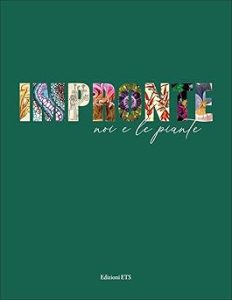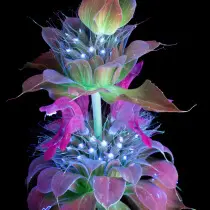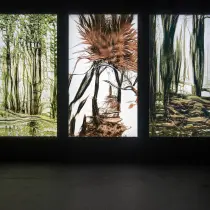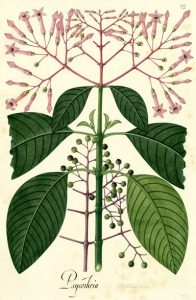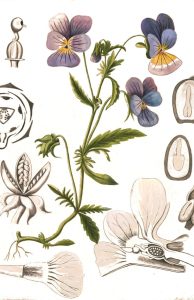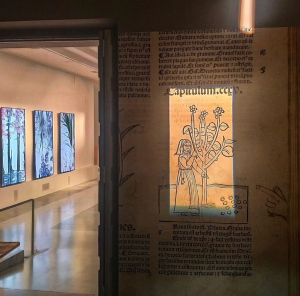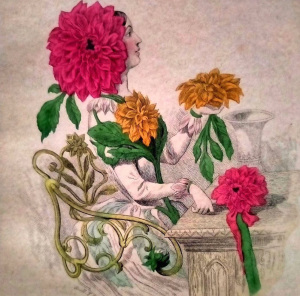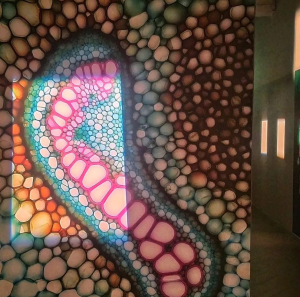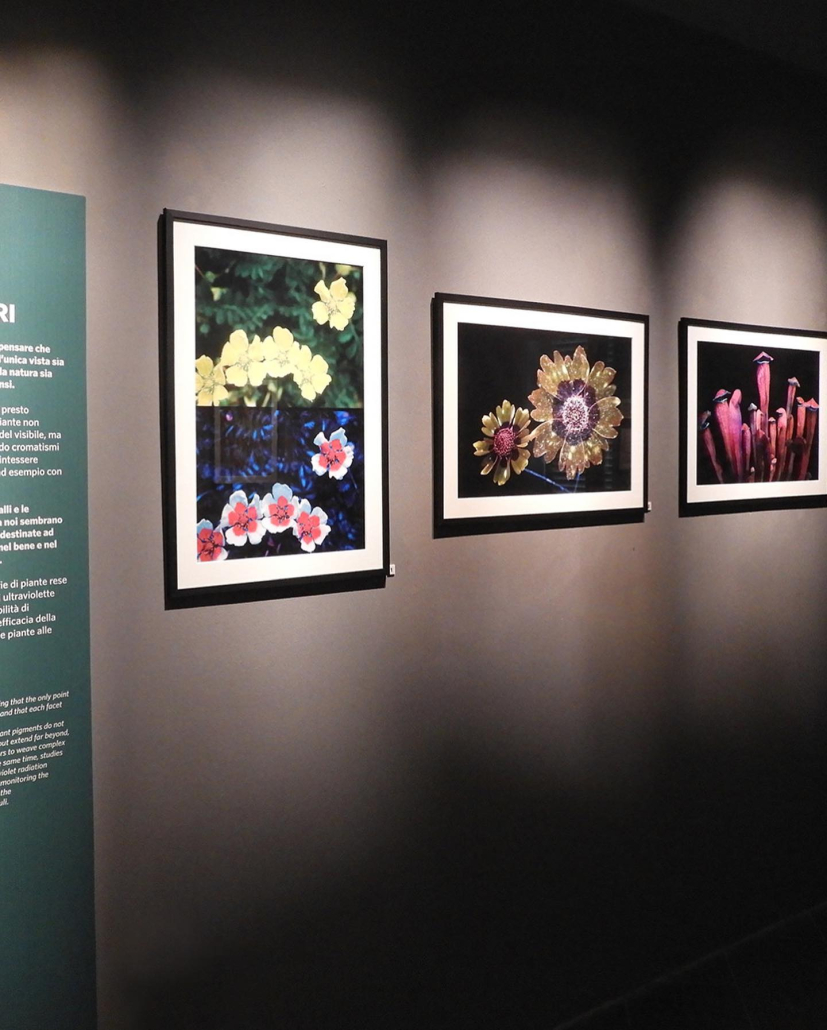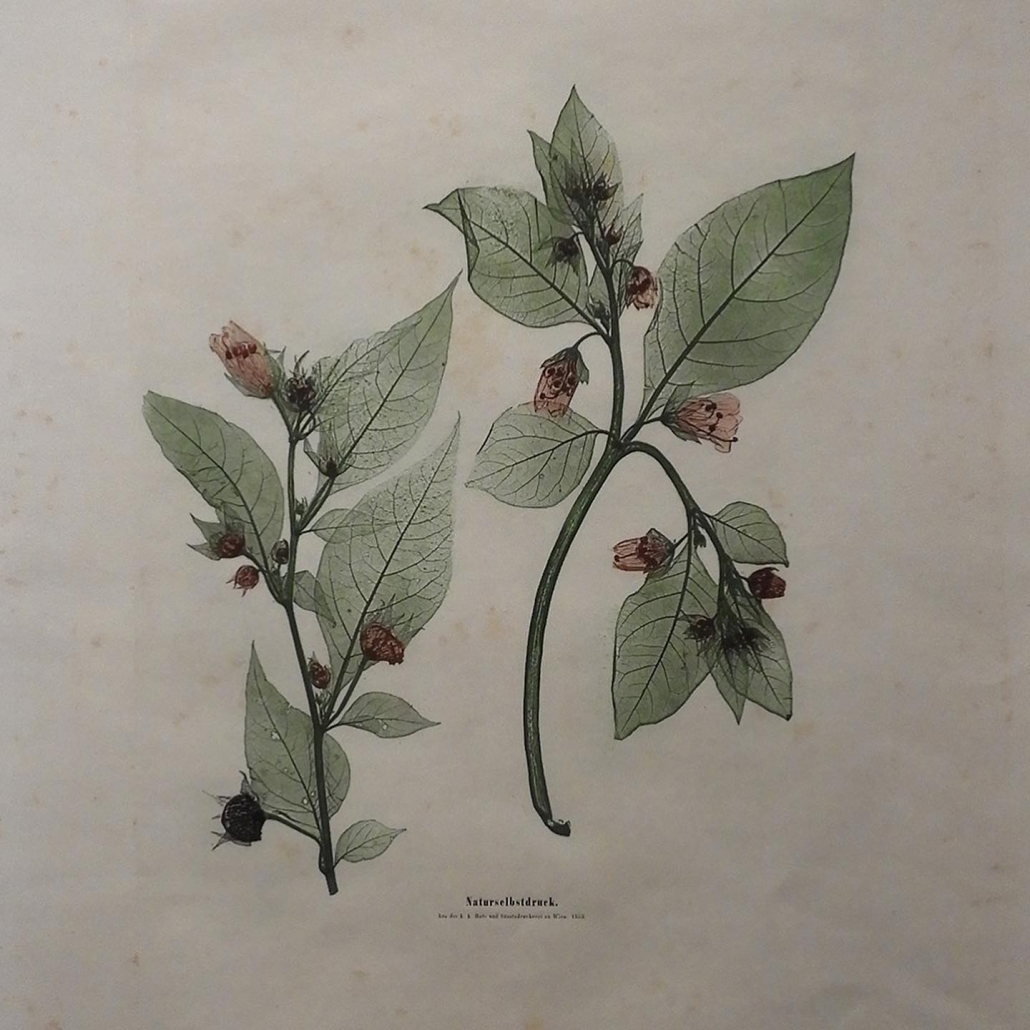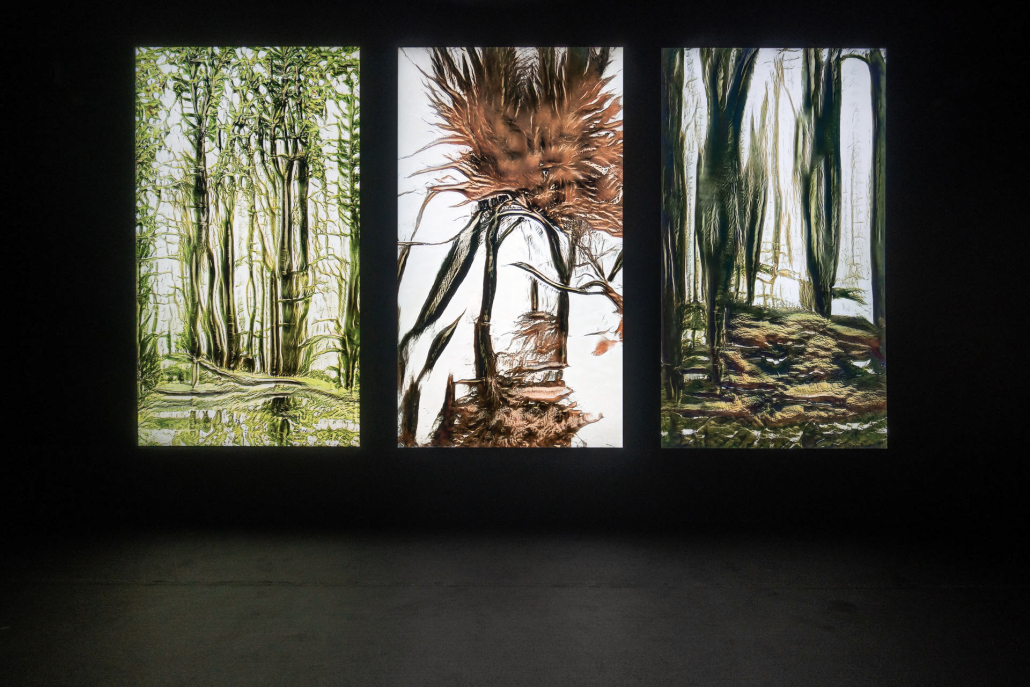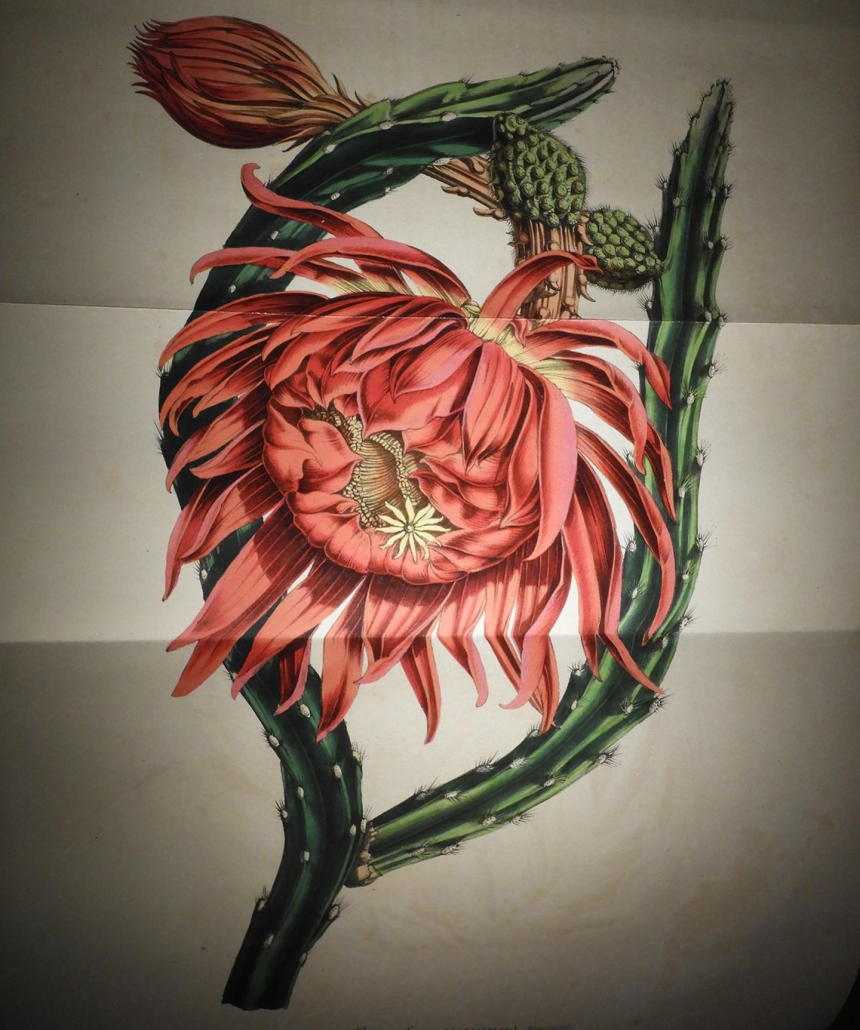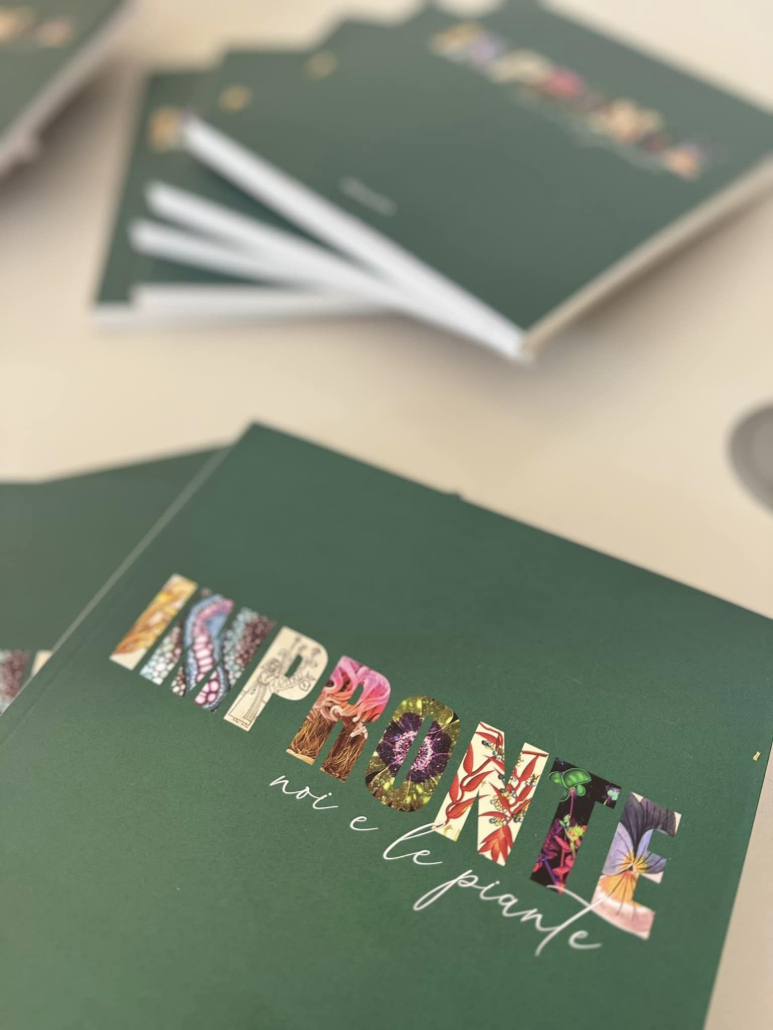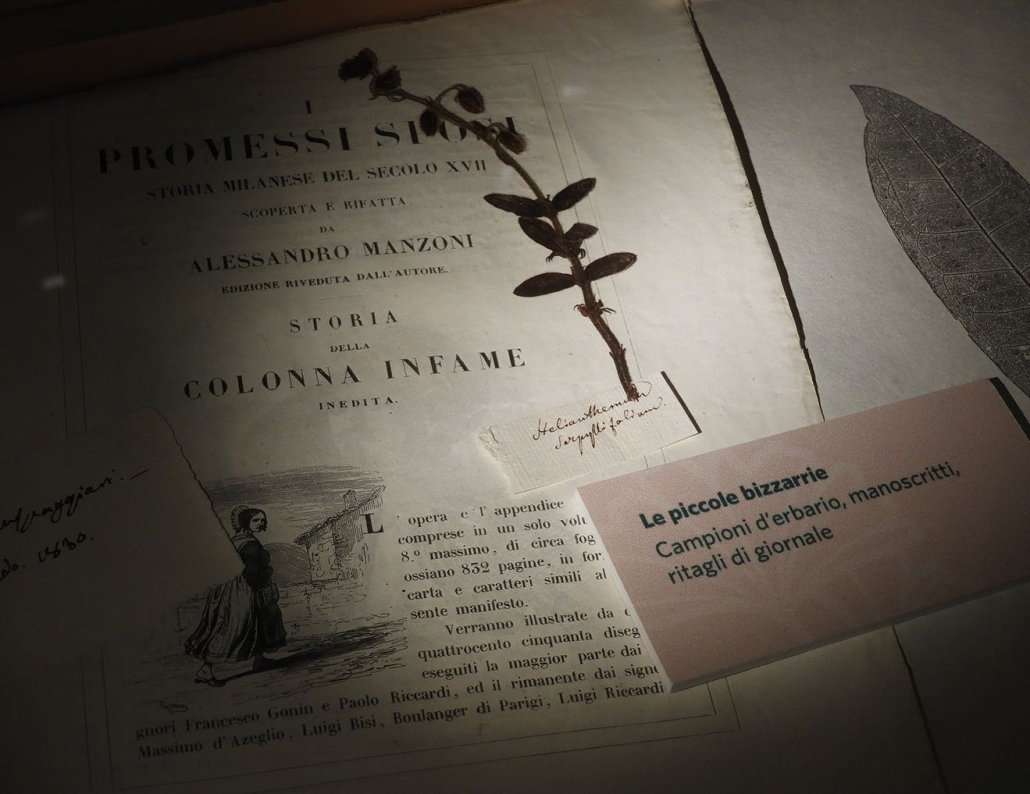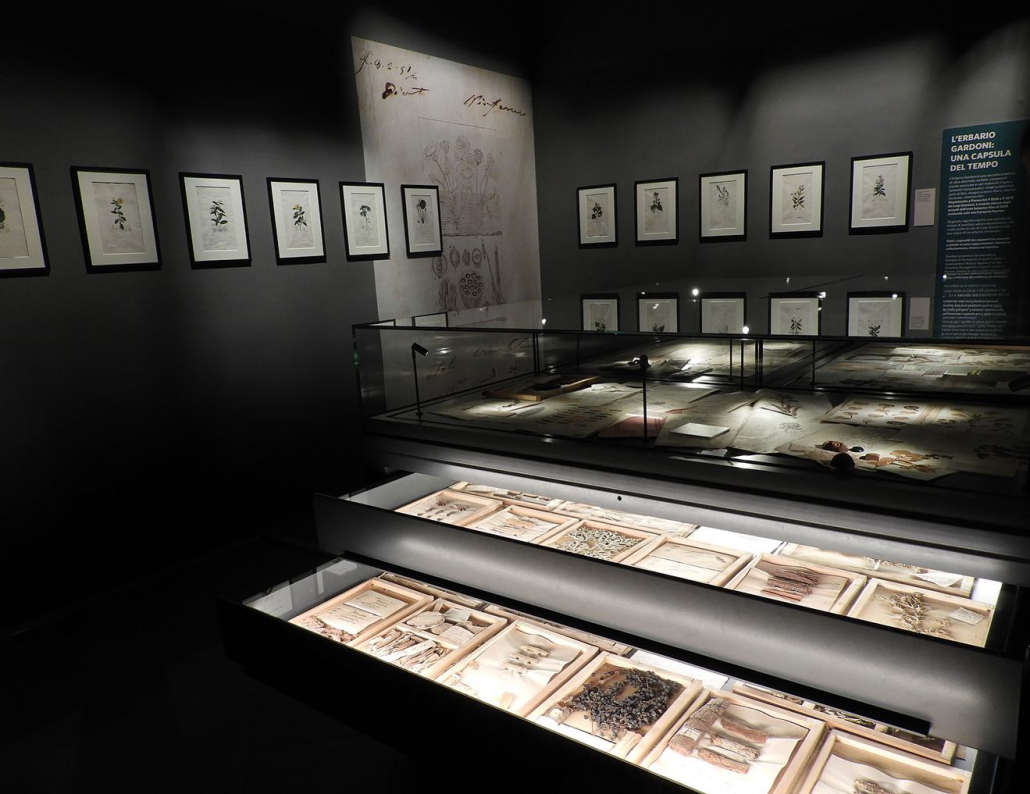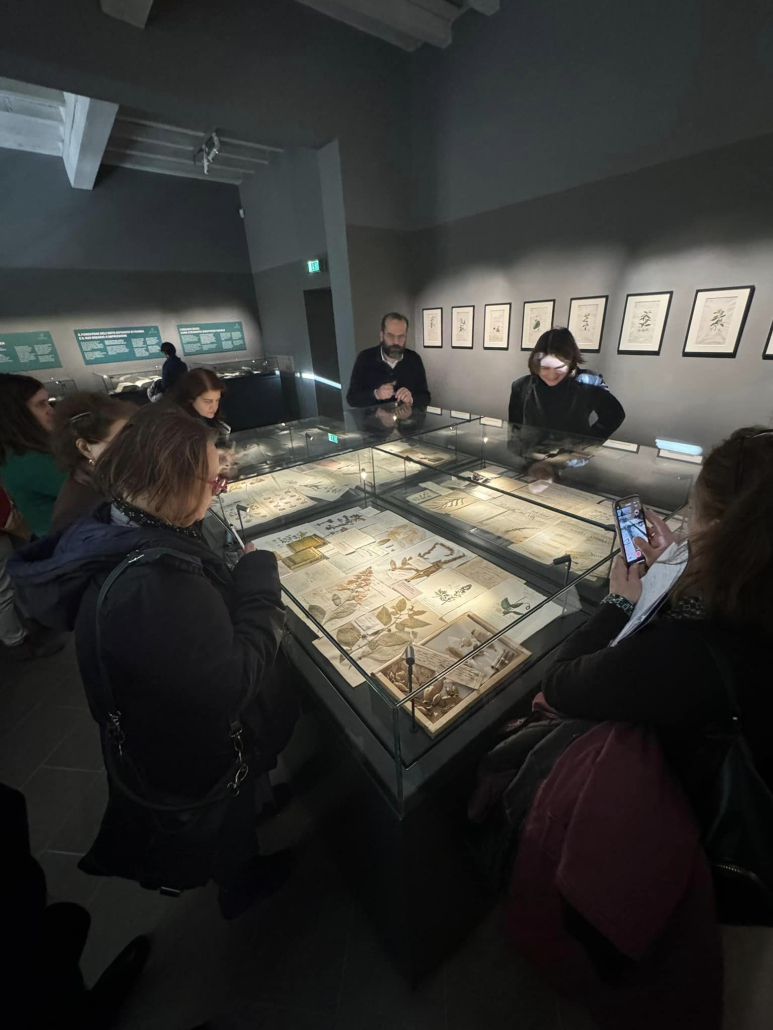Impronte. Noi e le piante
13 January/1 April 2024
Palazzo del Governatore
Piazza Garibaldi 19, Parma
Visiting an exhibition and finding ourselves leafing through a family album, in which what comes to life before our eyes are not private memories but the collective, changing memories of our relationships with plants over the course of more than six centuries. In Parma, in the splendid setting of Palazzo del Governatore, Impronte. Noi e le piante (Us and Plants), a unique exhibition that traces in over 200 figurative objects (historical herbaria, botanical illustrations, nature prints and xylotypes, as well as modern photographs and high-tech images) the inexhaustible relationship that links humanity and nature, botany and images, science and art.
Realised by the University of Parma in collaboration with the Municipality of Parma and with the support of the Cariparma Foundation, the Chiesi Group and the Davines Group, Impronte unravels in its 10 sections the thread of natural memory that man has always tried to capture and fix, from herbarium maps to today’s satellite images of tree censuses, passing through illustrations, notebooks, models and even magnetic resonances and X-ray views. At the centre, an ideal and concrete link between the epochs, is the audiovisual installation Artificial Botany, curated by fuse*, which explores the suggestions and expressive capacities of classical botanical illustrations through the use of modern machine learning algorithms.
The exhibition – which can be visited free of charge until 1 April, from Wednesday to Sunday, from 10 a.m. to 7 p.m., including holidays – also includes guided tours, educational workshops reserved for young explorers accompanied by their teachers, and a competition for young illustrators, thus intensifying the dialogue – never interrupted – between Parma and its University. A relationship that is now even deeper thanks to the start of renovation work on the Botanical Garden, which has undergone significant renovation aimed at making it one of the city and national hubs on which to focus scientific communication, education and shared research, especially on the themes of plant culture in all its humanistic and scientific forms. In the recovery project, the University is supported by institutions and private entities in the area: Ministero dell’Università e della Ricerca, Ministero della Cultura, Fondazione Cariparma, Gruppo Chiesi e “Parma, io ci sto!”
Many of the works on display bring to light the relationship between botanical imagination and the city, from the herbaria of illustrious personalities determined to give botanical knowledge its due (such as Luigi Gardoni, whose eponymous pharmaceutical herbarium was only brought back to light in 2014 after a silent stay in the Botanical Garden’s cupboards lasting more than a century) to the ‘royal donation’ of wax models of mushrooms purchased by Maria Luigia of Austria for the Botanical Garden itself, and the stories, news and curiosities contained in the equally extensive digital universe of QR-codes and videos.
The provenance of the materials is rich and varied, which in addition to local lenders has involved foreign structures (Real Jardin Botanico in Madrid) and first-rate structures in Italy (Botanical Gardens of Padua, Bologna, Pavia, the Italian Central Herbarium in Florence and the Enti Oliveriani in Pesaro, among others). At the centre of the exhibition, however, is the scientific depiction of plants and its transformation in style, perception and objectives: a path that uses the lever of beauty to show how much our way of looking at plants has changed over the centuries and, with it, our opinion of them.
‘The expression plant blindness is often used to indicate our poor ability to notice plants in everyday life,’ explains Renato Bruni, scientific director of the Botanical Garden of Parma and head of the exhibition’s scientific project. ‘Impronte was created to highlight how, instead, scholars and researchers have developed a great capacity for observation towards these organisms over the centuries, gradually discovering their characteristics and peculiarities. What has been lacking until now has been the limelight, the full display of the photomontage that science has built up over centuries of botany, a sequence plan to understand how much the answer to an only apparently innocuous question has changed: ‘what is a plant?’ It is an answer facilitated by the visual tool and its symbolic value: scientific images of plants are beautiful and capable of conveying complex concepts in the emotion of a moment’.
The Ten Sections
Articulated in an itinerary occupying the 570 square metres of exhibition space on the first floor of the Palazzo del Governatore, the ten sections into which the exhibition is organised take visitors on a journey through time between islands of knowledge, moving between the extremes of an old and new utilitarianism that through plant representation lands on the archipelagos of science and the arts:
1. The age of drawing – between decoration and study
2. Scientific illustration – between aesthetics and identity
3. At school for botany – images of real knowledge
4. The world of female illustrators – a door to science
5. The Parma Collections – a time capsule that opens up
6. The age of technology – serial images and objectivity
7. Photographs and new eyes – plants beyond the visible
8. Plants and the world – interacting organisms
9. Holistic images – beyond mere form
10. Group photos – us and plants in the city, in the fields, in the woods
From calligraphic reproductions to precision agriculture, from medieval herbaria to positron emission tomography, Impronte traces the temporal parabola of the relationship between man and nature, showing all its declinations. A hand, or rather, a manicula, emphasises this right from the start of the exhibition: it is the one drawn by an unknown reader in the margin of the copy of Johannes da Cuba’s Hortus Sanitatis (1548), an ante litteram marker that at a distance of centuries leaves behind a still clearly visible imprint, and from which to start.
This led to the development of herbals for use by doctors and pharmacists, dominated by a realistic approach and a precise function, plates taken from atlases destined for the ‘professional’ recognition of weeds to be eradicated along railways, but also catalogues of colour samples to be matched to precise botanical varieties and species such as the highly original Répertoire de couleurs pour aider à la détermination des couleurs des fleurs, des feuillages et des fruits, which united the experiences and needs of floriculturists, artists and scientists. It was also thanks to such a variety of applications that an advancement in research into impression techniques, lithography and electroplating above all, became necessary, which combined with the artistic fascination for botanical illustration quickly led to its commercialisation, bringing it into modernity. Serial reproductions, prints, but also traces of compelling spy-stories related to theft and property rights add precious and unimagined pieces to the complex mosaic created by the works on display. These include the extremely rare calligraphic reproductions of mushrooms in wax, the Brendel models in papier mâché and the wooden ‘identity cards’ of trees, the xylotheca or holzbuch, which together contribute to describing the move away from the knowledge of plants by mere recognition towards a broader dimension, which contemplates physiological, ecological and even agronomic aspects.
An object of ever-increasing interest, naturalistic representation also involves the female professional sphere, because it is precisely through the door of botanical illustration that many women have been able to access the world of scientific discoveries, historically dominated by the male gender. A long and not without obstacles path – well summarised by the video specially made with the collaboration of the Botanical Museum of the University of Padua – but full of great beauty, the same that emanates from the original eighteenth-nineteenth century works of Maria Sybilla Merian, Dissertatio de generatione et metamorphosibus insectorum Surinamensium, Elizabeth Blackwell, A curious herbal, and Rosalba Bernini, some plates of which are exhibited.
Imprints. Noi e le piante also offers a due opportunity to reflect on the heritage of historical documents held by the University and various city institutions (Biblioteca Palatina, Fondazione Cariparma, Convitto Nazionale Maria Luigia). It is here that previously unpublished or rarely exhibited materials become the protagonists (such as, in addition to the Gardoni herbarium, the Berta, Guatteri and Jan herbaria), and the itinerary leads visitors to discover the new technologies used to represent plants. From the earliest photographic reproductions obtained for scientific purposes, such as the exotic ones taken from Asiatic Palms during Odoardo Beccari’s botanical campaigns in Borneo, through to images obtained using microscopic techniques, the works on display explore a present that is speeding towards new goals. The incredible spectrographic portraits taken of plants to accelerate agronomic selection and the photographs of contemporary scientist-artists such as Craig Burrows, Igor Siwanovicz, Rob Kesseler and Jan Martinek, which are both experimental research tools and winners of international photographic prizes, tell this story.
The last section, a broad and scientifically accurate perspective, opens by revealing modern illustrations capable of widening the gaze from the particular to the general, just like in a group photo. Microscopy, infrared, ultraviolet, radar, satellite images, time lapse, resonance and fluorescence provide the ideal framework for reflecting on the issues that characterise our contemporary world, from climate change to air quality, from agricultural sustainability to the management of urban and forestry greenery. Thanks to these new visions, much knowledge has been deepened and amplified, taking plants from ‘inanimate’ living beings to organisms centred on complexity and interaction, indispensable to our life in cities and on the planet. This new era of imagery has revealed to us that plants have needs that we can no longer ignore, not least because they are now before our eyes.
The installation: Artificial Botany
A link between the two macro-sections into which the exhibition is structured and a work in continuous evolution, Artificial Botany condenses the beauty of images with the power of technology to create a hypnotic audiovisual installation in which the fluidity of the plant’s life process is represented from a series of vintage botanical illustrations.
Collected from the opensource digital archives of mid-19th century illustrators, these illustrations have become the teaching material for a particular machine learning system called GAN (Generative Adversarial Network) which, through a training phase, is able to recreate new artificial images with morphological elements extremely similar to the inspirational images but with details and characteristics that seem to bring out a real human representation. The machine reworks the content by creating a new language, capturing the information and artistic qualities of man and nature.
Workshops and guided tours
Science and art to be seen, known and experienced. Faithful to its vocation of openness and exchange with the public, the University of Parma enriches the Impronte exhibition offer by organising a rich calendar of workshops (organised by Esperta) and guided tours (organised by Artificio). Fifty appointments – bookable through the University museum system – aimed at students young and old, from primary to high school, where they can have fun discovering all the secrets of the long history of botanical representation. Adults, on the other hand, will be able to take part in special guided tours at certain weekends, to explore the themes dealt with in the ten sections of the exhibition in depth, amidst anecdotes and curiosities.
The competition: Impronte OFF
An illustration competition open to young illustrators, an exhibition/happening that will enrich the exhibition itinerary, and two meetings outside the city to make the Botanical Garden of Parma known not only as a place of study but also as an innovative aggregative pole designed for the new generations. The Impronte Off programme – conceived by Interno Verde and promoted by the association ‘Parma, io ci sto!’ – will accompany the exhibition by involving students and professionals under 35, thus helping to familiarise girls and boys with the role that the Botanical Garden will assume for the territory.
The call for entries for the illustration competition, based on the theme of fantastic botany, will be published on Monday 18 December on the website www.internoverde.it and will remain open until Sunday 28 January. Ten finalists will be selected to exhibit their works within Impronte. Further events aimed at exploring the potential of botanical representation will be organised between February and March in both Milan and Bologna.
The Botanical Garden of Parma
Already in the 17th century there was a Giardino dei Semplici at the old university site in Borgo degli Studi, dedicated to the cultivation of medicinal herbs. The current site in Via Farini was established in 1770 thanks to the work of Giambattista Guatteri. The characteristic 18th-century greenhouses, probably designed by a pupil of the court architect Ennemond-Alexandre Petitot, were completed in 1793. Guatteri was responsible for the choice of an experimental naturalistic orientation, inspired by that of the University of Padua: live study, floristics of the territory, acclimatisation of exotic plants in greenhouses, exchanges with other gardens according to a practice that still persists today.
Following the transfer of all research activities to the University Campus, the vocation began to change in 1980. From being a place where science is produced, the Garden gradually took on the features of a platform where science is told. After a long period of oblivion, in recent years the Botanical Garden has regained a prominent role in the policies of the University of Parma. An emblematic and identifying place for the community, housing various valuable collections, it encapsulates the area’s scientific and environmental tradition. Its future is to move away from the static nature of the hortus conclusus with little public access, becoming instead a preferential point for scientific communication, education and research on environmental, biodiversity and sustainability issues.
The Garden is at the centre of a restoration and redevelopment initiative, in which the University is joined by local institutions and private entities, aimed at exploiting the collections in a modern key to raise awareness of the benefits of plants to human life and at the same time reconstruct the historical memory of the Garden, recovering essences and collections present in the catalogue drawn up at the time of its foundation. The new structure will have the same vocation as this exhibition: to tell the story of the necessary relationship between us and plants.
Impronte. Noi e le piante is realised by the University of Parma in collaboration with the Municipality of Parma, the support of the Cariparma Foundation, the Chiesi Group and the Davines Group, and with the patronage and collaboration of the University of Padua, le Scienze and National Geographic.
STATEMENTS
‘Impronte. Noi e le piante represents for the University of Parma a sort of ‘manifestation of intent’ towards the city. With its own funds and with the fundamental support of the territory, in a ‘team game’ in which we believe a great deal, the University has for some years now been working on an important redevelopment project for the Botanical Garden and the Natural History Museum, which will enter into full swing in 2024 with the opening of the building sites. These two sites are preparing to regain the central role they deserve in the city’s cultural fabric. The themes around which this itinerary gravitates are the same as those underlying the exhibition designed for Palazzo del Governatore: the key words are dialogue, contamination, sustainability, complexity, involvement, discovery. This exhibition therefore represents an important milestone, both in the tangible terms of an exhibition and in the intangible but no less powerful ones of a design synthesis’ – Paolo Martelli, Rector of the University of Parma
‘Palazzo del Governatore will be transformed into a wunderkammer crowded with 200 items that will unveil minute botanical details thanks to a new and happy collaboration between public cultural institutions and enlightened entrepreneurial realities of the territory. For Parma, it is also the revelation of a passionate collection that has gone on to substantiate the Gardoni, Berta, Guatteri and Jan Herbaria kept by the Botanical Garden, which, for the first time exhibited together, tell of the city’s privileged relationship with 19th-century illustration and a lively interest in botanical knowledge. It is an itinerary that will fascinate with romantic fanatical footprints that have spanned the centuries, with the astonishing investigations that modern imaging can trace, but above all that will leave visitors with an urgent and contemporary question: what footprints are we leaving behind?’ – Lorenzo Lavagetto, Deputy Mayor and Councillor for Culture and Tourism of the City of Parma
‘This exhibition project allows us to refocus on the difficult balance between man and nature. Footprints. Noi e le piante will allow the community, especially the younger generations, to consolidate knowledge and awareness of the botanical heritage of our territory, also thanks to the networking of all those places that today keep track of it and that will be revived in a systemic perspective in the new exhibition spaces of the Botanical Garden. This exhibition is also rightfully part of Fondazione Cariparma’s educational initiative A scuola nei Musei (At School in the Museums), which for over 20 years has been addressed to all schools in our territory. The planet has always been our home. In order to contribute to global challenges, we must first of all do our part on the territory we inhabit, safeguarding local history and biodiversity, in order to design its future. Together’ – Franco Magnani, President of the Cariparma Foundation
‘We immediately appreciated the Impronte project. First of all, because the exhibition at Palazzo del Governatore will contribute to enhancing an important heritage of the city of Parma: the Botanical Garden, which preserves an important cultural corpus, of which the Gardoni Herbarium is an example, and is a place dedicated to scientific knowledge. Secondly, because we believe that Impronte represents the coherent development of a path we have been following since 2020, with the projects Pharmacopea first and L’Arte della Cura later. The theme is the rediscovery of the chemical-pharmaceutical identity of our territory. As a Benefit Company and certified B Corp, we are proud to contribute to the realisation of this exhibition, to keep the attention high on the link between science and botany and on the city’s Botanical Garden’ – Alessandro Chiesi, President of the Chiesi Group
‘Among what we cannot see of plants are their roots; undoubtedly those of the Davines Group are deeply rooted in the pharmaceutical and apothecary traditions of our city. After the Pharmacopea project, with which we have revived together with the Chiesi Group a pathway that goes from the Botanical Garden to the Antica Farmacia S. Filippo Neri, I am happy to have contributed to the birth of another ‘cultural product’ that is in tune with the history and commitment of my family, starting from the first activities of my mother Silvana, who more than 40 years ago began cutting-edge research on the best cosmetic active ingredients of plants. The reflections that emerge from the exhibition on colours as declinations of beauty and on the plant as a holistic unitary reality possess a unique charm that will accompany visitors in the re-discovery of the chemical-pharmaceutical history of Parma’ – Davide Bollati, Chairman of the Davines Group
Impronte – Noi e le piante is an exhibition organised by
Maria Amarante, Renato Bruni, Daniela Fermi, Nicola Franchini, Lorenza Morisi and Agnese Zeni for the University of Parma Museum System
with the support of
Claudia Addabbo and Elena Canadelli from the University of Padua.
Scientific project
Renato Bruni
Texts
Claudia Addabbo, Renato Bruni, Elena Canadelli and Agnese Zeni
Graphics and layout
Nicola Franchini and Maria Amarante
Organisational coordination
Daniela Fermi and Lorenza Morisi
The installation Artificial Botany is curated by Studio Fuse*.
With the patronage and collaboration of

Supplies by
Website: Fico Creative, Parma
Press Office and Communication
Ex Libris, Milan
Educational workshops
Expert, Parma
Catalogue
ETS Edizioni, Pisa
Video
Bitmovies, Potenza
Exhibition showcases
Arteche, Brescia
Electrical system support
Toscani Impianti Elettrici, Parma
Carpentry works
GAP – Falegnamerie Creative, Parma
Hardware supports
Omnimedia Group, Parma
Frames
La Correggio Cornici, Parma
Led Lights Integration
Domotrick, Reggio Emilia
Prints
Toriazzi, Parma
Transport and assembly
Colser, Parma
Cleaning historical materials
GEA Restauri, Florence
Image and video rights
Rob Kesseler, AGF, Springer nature, Pond 5
Thanks to:
Parma, io ci sto
List of lenders
Agenzia Giornalistica Fotografica; Agrofood Research Hub, DICATAM, Università degli Studi di Brescia; Agrosat
– IBE CNR; Annalisa Rizza; Barbara Gherri; Biblioteca dell’Accademia Nazionale di Scienze, Lettere e Arti di
Modena; Biblioteca dell’Orto Botanico dell’Università degli Studi di Pavia; Biblioteca di Medicina e Chirurgia
“Ottaviani” dell’Università degli Studi di Parma; Biblioteca di Scienze dell’Università di Firenze; Biblioteca storica
di Medicina e Botanica Vincenzo Pinali e Giovanni Marsili dell’Università di Padova; Centro Studi per l’Ambiente
Alpino dell’Università di Padova; Complesso Monumentale della Pilotta – Galleria Nazionale e Biblioteca Palatina;
Comune di Merano; Convitto Nazionale Statale “Maria Luigia”; Craig P. Burrows; Descartes Labs, Inc.; Erbario
Centrale dell’Università degli Studi di Firenze; ESA/Crop Parcel Base Register, Dutch Ministry of Economic Affairs
and Climate Policy; European Space Agency; Fernan Federici; Fondazione Cariparma; Giorgio Vacchiano; Heiti
Paves; Igor Siwanowicz; Jan Martinek; Laboratorio di simulazione urbana Fausto Curti, DASTU, Politecnico di
Milano; LemnaTec; Museo Botanico dell’Università degli Studi di Padova; Museo della Frutta Francesco Garnier
Valletti; Museo delle Scienze naturali di Brescia; Museo di Storia Naturale del Lussemburgo; Orto Botanico
dell’Università degli Studi di Bologna; Orto Botanico dell’Università di Modena; Orto Botanico dell’Università
di Parma; Real Jardin Botanico di Madrid; Rob Kesseler; Science Photo Library; Sinoptic; Tremeetrics; TS
Photogrammetrie & Geoinformatik;
WORKSHOPS AND EDUCATIONAL VISITS
There are 50 workshops with educational visits reserved for primary, middle and high schools.
The appointments, which can be booked through the booking system adopted by the University Museum System, will last a total of 2 hours, one visit and one workshop.
sma.unipr.it/
GUIDED TOURS
There is a calendar of guided tours reserved for the adult public. Groups and groups can book
by writing to sistema.museale@unipr.it
EVENTS
Friday 1 March from 6 p.m.
Imprints Off
conceived by Interno Verde and promoted by the association ‘Parma, io ci sto!’
One of the highlights will be the proclamation of the winner of the competition dedicated to Fantastic Botany. The Impronte programme expands with increasingly engaging and multidisciplinary initiatives.
Saturday 2 March I Like Parma
Guided tour of the Impronte exhibition. We and plants
7 p.m.
Governor’s Palace
With Renato Bruni, curator of the Impronte scientific project
In addition, the opening hours of the exhibition will be exceptionally extended and can be visited
from 10 am to 10 pm (last admission 9.30 pm)
Sunday 2 March I Like Parma
Visiting an exhibition from a seated position. Renato Bruni talks about the genesis of Impronte
4.30 p.m.
Governor’s Palace
With Renato Bruni, curator of the Impronte scientific project
free entrance
Friday 8 March
Doubt and desire
6 p.m.
Governor’s Palace, Mattioli Auditorium
With Silvia Bencivelli, author of Il dubbio e il desiderio. Eva Mameli Calvino (Electa, 2023)
Renato Bruni, curator of the Impronte scientific project
admission free
Saturday 16 March
How plants see us, and vice versa
10 a.m. to 1 p.m. and 2 p.m. to 5 p.m.
Governor’s Palace
With 20 students from the ‘Tourism’ course of the ITC Bodoni of Parma who will act as
guides to visitors to the exhibition
Sunday 17 March
How plants see us, and vice versa
From 10 am to 1 pm and 2 pm to 5 pm
Governor’s Palace
With 20 students from the ‘Tourism’ course at ITC Bodoni in Parma who will act as
Friday 22 March
Marvelous Creatures
6 p.m.
Palazzo del Governatore, Mattioli Auditorium
With Stefano Mazzotti, author of the book Meravigliose Creature (il Mulino, 2024) and director of the
Museum of Natural History in Ferrara
Davide Persico, director of the Natural History Museum at the University of Parma
Moderator: Renato Bruni, curator of the Impronte scientific project
Free admission subject to availability
All meetings, with the exception of the guided tour, are free admission
The exhibition catalogue is edited by Edizioni ETS:
